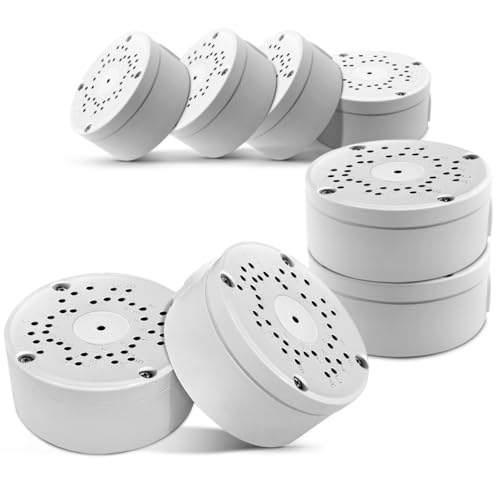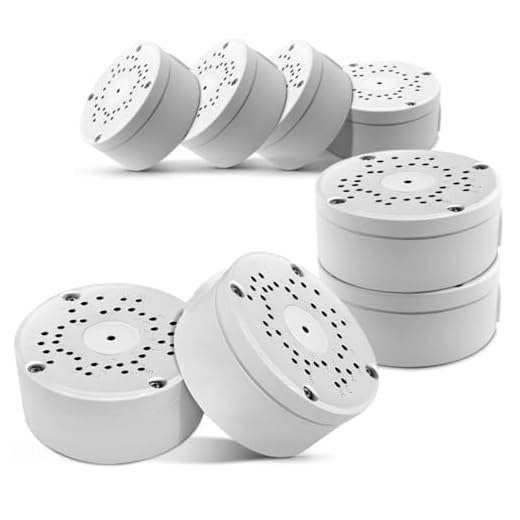


Indoor security cameras are a popular choice for monitoring the inside of your home or office, but what if you want to use them outdoors? While indoor cameras are not designed to withstand the elements, with the right precautions and setup, you can still use them effectively outside.
Before you install your indoor security camera outdoors, there are a few important factors to consider. You’ll need to make sure the camera is protected from the elements, such as rain, wind, and extreme temperatures. Additionally, you’ll want to ensure that the camera has a clear view of the area you want to monitor and that it is securely mounted to prevent tampering or theft.
One option for using an indoor security camera outdoors is to place it in a weatherproof housing. These housings are designed to protect the camera from moisture and other outdoor elements while still allowing it to function properly. Make sure to choose a housing that is compatible with your camera model and provides adequate protection for the environment in which you plan to use it.
Guide to Using Indoor Security Camera Outdoors
Indoor security cameras are designed for indoor use, but with the right precautions, you can use them outdoors as well. Here are some tips to help you use your indoor security camera outdoors effectively:
1. Weatherproofing
Make sure your indoor security camera is properly weatherproofed before installing it outdoors. You can purchase weatherproof housing or enclosures specifically designed for indoor cameras to protect them from the elements.
2. Power Source
Ensure that your outdoor setup has a reliable power source. You may need to use a weatherproof extension cord or find a nearby outlet to power your camera. Consider using a battery-powered camera if a power source is not readily available.
Preparation Steps for Outdoor Use
Before installing an indoor security camera outdoors, it is important to take certain preparation steps to ensure its proper functioning and longevity. Here are some key steps to consider:
1. Weatherproofing
Ensure that the indoor security camera is weatherproofed or housed in an outdoor-rated enclosure to protect it from the elements, such as rain, snow, and extreme temperatures.
2. Power Source
Make sure to have a reliable power source for the camera, such as a weatherproof power outlet or use of a power over Ethernet (PoE) adapter if the camera supports it.
Weatherproofing Your Indoor Camera
When using an indoor security camera outdoors, it is crucial to weatherproof it to protect it from the elements. Here are some steps you can take to weatherproof your indoor camera:
| 1. Housing | Invest in a weatherproof housing or enclosure designed for outdoor use. This will provide an extra layer of protection against rain, snow, and extreme temperatures. |
| 2. Sealant | Apply a waterproof sealant around the seams and openings of the camera to prevent water from seeping in. Make sure to use a sealant that is suitable for outdoor use. |
| 3. Mounting | Mount the camera in a sheltered area, such as under an eave or porch, to minimize its exposure to the elements. This will help prolong the camera’s lifespan. |
| 4. Cable Management | Properly manage the cables and connections of the camera to prevent water damage. Use waterproof cable connectors and ensure they are securely fastened. |
By taking these steps to weatherproof your indoor camera, you can use it outdoors with confidence and ensure its longevity in various weather conditions.
Positioning and Mounting Tips
When positioning an indoor security camera outdoors, it’s crucial to consider the following tips to ensure optimal performance:
| 1. Weatherproof Housing: | Make sure the camera is placed in a weatherproof housing to protect it from the elements such as rain, snow, and extreme temperatures. |
| 2. Mounting Height: | Position the camera at an appropriate height to capture the desired area effectively. Ideally, mount it at least 8-10 feet above the ground for optimal coverage. |
| 3. Avoid Direct Sunlight: | Avoid placing the camera in direct sunlight to prevent glare or overheating, which can affect image quality. |
| 4. Secure Mounting: | Ensure the mounting surface is secure and stable to prevent the camera from being tampered with or knocked down by strong winds. |
| 5. Cable Protection: | Protect the camera’s cables from exposure to the elements by using waterproof cable connectors or conduits. |
Considerations for Outdoor Surveillance
When using an indoor security camera outdoors, there are several important considerations to keep in mind to ensure optimal performance and durability.
Weatherproofing: Make sure the camera is designed for outdoor use and has a high weatherproof rating to withstand various weather conditions like rain, snow, and heat.
Power Source: Ensure that the camera has a reliable power source, whether it’s through a wired connection or a long-lasting battery for uninterrupted surveillance.
Mounting Options: Choose a suitable mounting location for the camera that provides a clear view of the area you want to monitor and secure the camera properly to prevent tampering or theft.
Remote Access: Check if the camera offers remote access capabilities so you can monitor your property from anywhere using a smartphone or computer.
Night Vision: Consider a camera with excellent night vision capabilities to capture clear footage in low-light or dark conditions.
Storage: Ensure that the camera has sufficient storage options, such as cloud storage or a microSD card slot, to save recorded footage securely.
Privacy Concerns: Be mindful of privacy issues when installing outdoor surveillance cameras and respect the privacy of your neighbors and passersby.
Connecting Your Camera to Outdoor Power Source
When using an indoor security camera outdoors, it is important to ensure that it is powered properly to function effectively. Here are steps to connect your camera to an outdoor power source:
- Choose the right power source: Select a power outlet that is suitable for outdoor use and located close to where you want to install the camera.
- Use weatherproof cables: Make sure to use weatherproof cables that are designed for outdoor use to connect the camera to the power source.
- Protect the connections: Use waterproof connectors or electrical tape to secure the connections and protect them from moisture and other weather elements.
- Consider a power over Ethernet (PoE) adapter: If your camera supports PoE, you can use a PoE adapter to power the camera through the Ethernet cable, eliminating the need for a separate power source.
By following these steps, you can safely and effectively connect your indoor security camera to an outdoor power source, ensuring reliable operation and protection from the elements.
Regular Maintenance and Monitoring
Once you have installed your indoor security camera outdoors, it is important to perform regular maintenance and monitoring to ensure its continued functionality and effectiveness. Here are some tips:
- Check the camera regularly for any signs of damage or wear and tear, such as cracks, water damage, or loose connections.
- Make sure the camera lens is clean and free of dirt, debris, or condensation that could affect the image quality.
- Test the camera periodically to ensure it is still capturing clear footage and functioning properly.
- Monitor the camera’s feed regularly to check for any suspicious activity or issues that may require attention.
By staying on top of maintenance and monitoring, you can maximize the lifespan and performance of your indoor security camera used outdoors.






